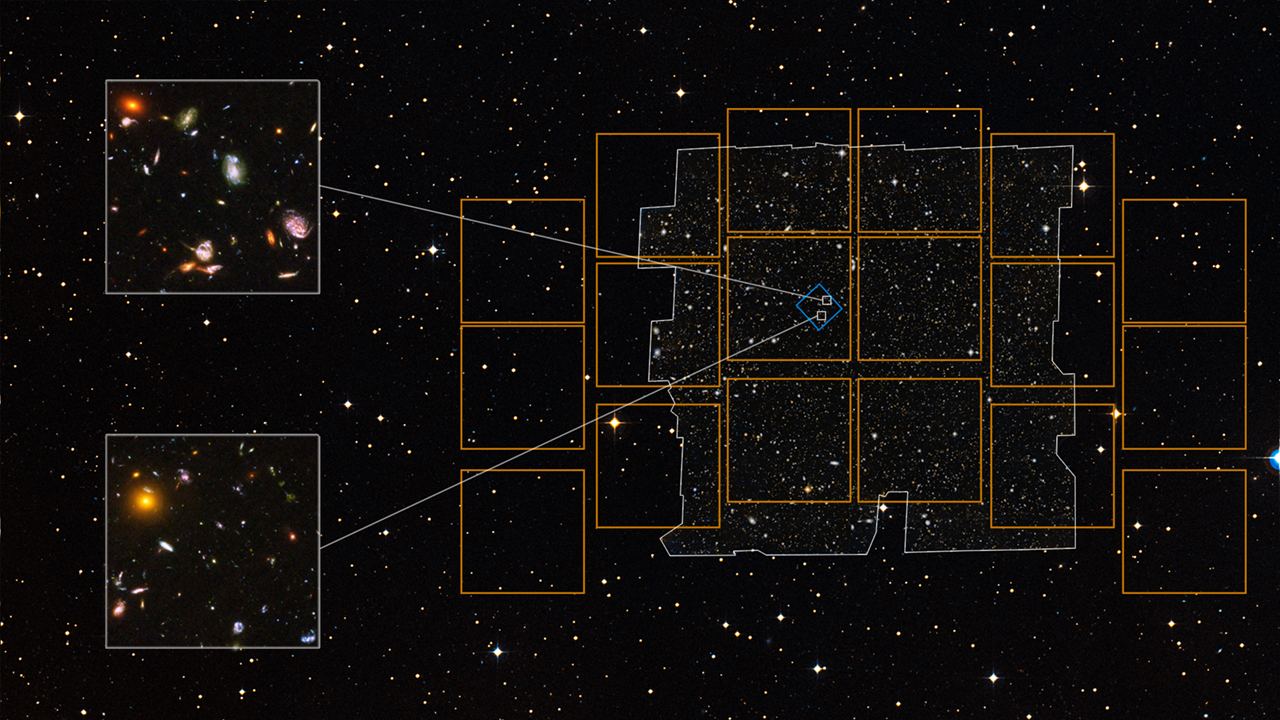Remember the Hubble Deep Field? And its successor the Hubble Ultra Deep Field? We sure do here at Universe Today. How could we forget them?
Well, just as the Hubble Space Telescope has successors, so do two of its most famous images. And those successors will come from one of Hubble’s successors, NASA’s Roman Space Telescope.
The Hubble Deep Field and Ultra Deep Field showed a generation of people how expansive and wondrous the Universe is. They showed that even empty-looking patches of sky are, in fact, full of galaxies. All sizes, shapes, and ages of galaxies.
And the Roman Space Telescope—also called the Nancy Grace Roman Space Telescope—(and formerly called WFIRST), will trump those images with images of its own. And they could be equivalent to 100 Hubble Ultra-Deep Fields at once. Mind equals blown, as the kids say.
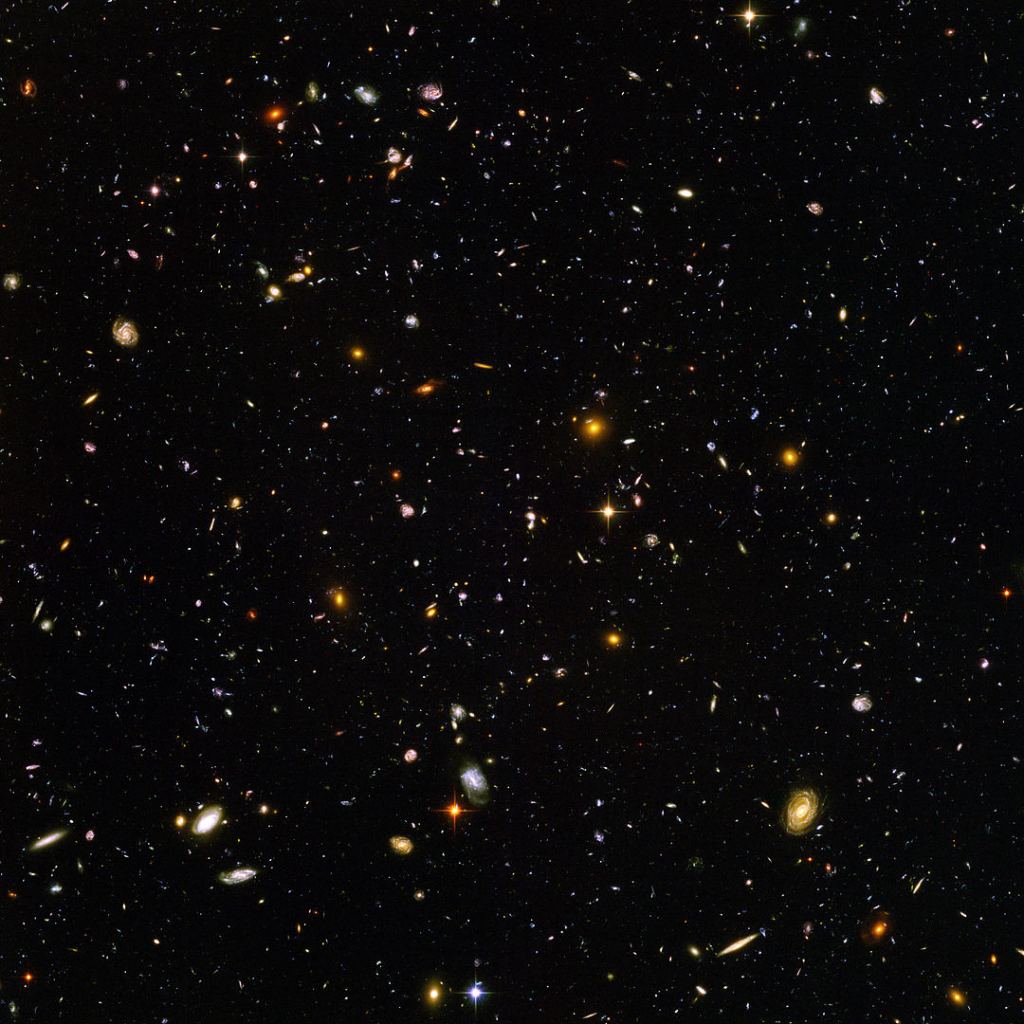
The Roman Space Telescope is scheduled to launch in 2025 on a five-year mission. It’ll perform cutting-edge research into some of the compelling questions surrounding cosmology and exoplanets. To do that, it has some serious observing power.
Its primary mirror is 2.4 m (7 ft 10 in) in diameter, the same size as the Hubble’s. But the Roman Telescope’s first working name was WFIRST, which stands for Wide-Field Infrared Survey Telescope. The Wide-Field part of its name means it can image an area of the sky much wider than Hubble can. Up to 100 times wider or more.
Observing time with the Roman will be highly coveted. A large portion of that time will be taken up with wide surveys covering large swaths of the sky. But some of the time is up for grabs and will be made available to whoever puts together a great observing proposal. According to some in the astronomy community, a Roman Ultra Deep Field observation like the Hubble Ultra Deep Field should be a priority and could provide many benefits.
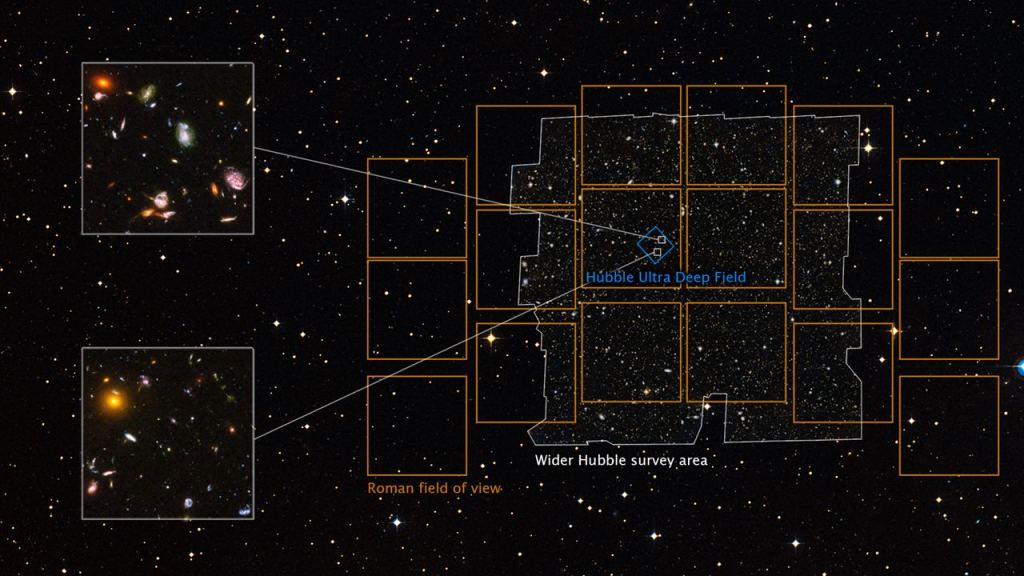
Acknowledgement: Digitized Sky Survey
Anton Koekemoer is a research astrophysicist with the Hubble Space Telescope at the Space Telescope Science Institute. He presented the idea for a Roman Ultra Deep Field at the 237th meeting of the American Astronomical Society. His idea currently has the support of astronomers from more than 30 institutions.
In a press release, Koekemoer spoke in favour of the project. “As a community science concept, there could be exciting science returns from ultra-deep field observations by Roman. We would like to engage the astronomical community to think about ways in which they could take advantage of Roman’s capabilities,” he said.
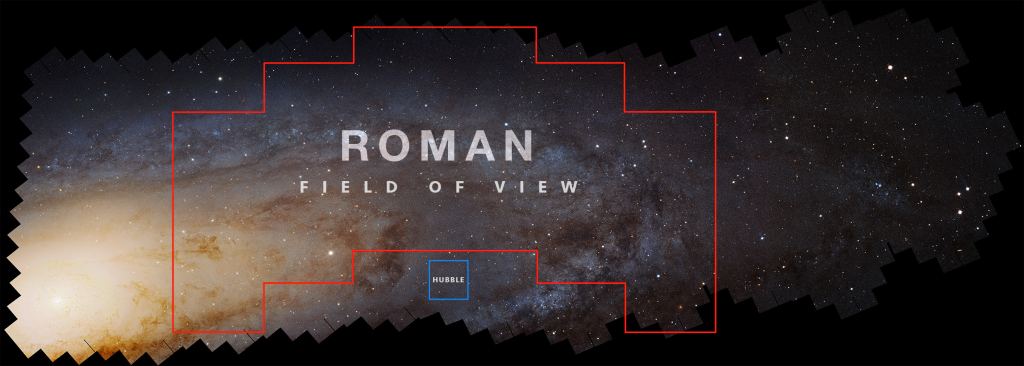
Hubble used about one hundred hours of its highly-coveted observing time to gather its Ultra Deep Field. It would take about the same amount of time for the Roman Space Telescope to gather a similar image. But while Hubble’s image contained thousands of galaxies, the Roman Telescope’s would contain millions of them. Who can predict exactly what new science and discoveries would come from the effort?
In those millions of galaxies would be some of the oldest ones ever imaged. While the Hubble’s deep image contained only a handful of those elusive targets, Roman’s deep image could contain hundreds of them, possibly even thousands. That would be a huge boost to our study of the early Universe. It could allow astronomers to study how those ancient galaxies are grouped, how old they are, and how their stars formed.
Not only that, but the Roman Telescope would work alongside other powerful telescopes, which can only provide another boost to our understanding.
“Roman would also yield powerful synergies with current and future telescopes on the ground and in space, including NASA’s James Webb Space Telescope and others,” said Koekemoer.
As telescopes become more and more powerful, they generate larger quantities of detailed data. But all of that data has to be handled properly, and there’s simply too much of it for astronomers to manage by themselves. The Roman Space Telescope will generate an enormous amount of data, and scientists are developing ways to deal with it.
Most of that centers around machine learning and AI.
When another super-powerful telescope, the Vera C. Rubin Observatory, comes online sometime this year, it will generate an almost overwhelming amount of observational data. The scientific community has been preparing for that massive flow of data years in advance. The Rubin Observatory has specialized infrastructure to handle it all. Northwestern University even implemented a new program to educate up and coming young data scientists to deal with it.

The Roman Space Telescope will rely on similar data-handling capabilities. It’ll rely on machine learning to process the massive database it creates. When each image can contain information on millions of individual galaxies, we’ll need elite computing power to help make sense of it all.
“The discovery potential enabled by the huge datasets from the Roman mission could lead to breakthroughs in our understanding of the universe, beyond what we might currently envision.”
Anton Koekemoer, research astrophysicist, Hubble Space Telescope/Space Telescope Science Institute.
But of course, all that data isn’t just a chore: it’s an unprecedented opportunity. “You could explore completely new questions that you couldn’t previously address,” stated Koekemoer.
The flow of data will likely also generate some new questions that nobody anticipated. “The discovery potential enabled by the huge datasets from the Roman mission could lead to breakthroughs in our understanding of the universe, beyond what we might currently envision,” Koekemoer added. “That could be Roman’s lasting legacy for the scientific community: not only in answering the science questions we think we can address but also new questions that we have yet to think of.”
The claims about the Roman’s observing power may be actually understated. In effect, the Roman is like a combination of the Hubble Space Telescope and the Sloan Digital Sky Survey (SDSS). It can’t do everything the Hubble does, particularly when it comes to UV observations. But for many of the observing programs it will undertake, the Roman is literally hundreds of times more powerful than the Hubble. And it’s massive field of view puts it in league with the SDSS.
The synergy with other observatories can’t really be overstated, either. Some very rare galaxies will be contained in the Roman’s massive datasets. Once they’re identified, they can be examined more closely with the James Webb Space Telescope and its powerful spectroscopy and IR capabilities.
The Roman Space Telescope will also test some of our most powerful and detailed simulations of the Universe. Astronomers and cosmologists have used supercomputers to create simulations of the Universe unfolding over time. Those data-based simulations show that between about 800 million and 1 billion years after the Big Bang, galaxies had started to group up as dark matter exerted its influence on them. That’s when the large scale structure of the Universe started to take shape. The Roman will be able to look at large numbers of galaxies from that time and compare them to simulations.
The study of star formation is a research area that the Roman should be able to shed some light on, too. Cosmologists talk about the “Cosmic Dawn” and the “Cosmic Noon,” which covers a span of time between about 500 million years and 3 billion years after the Big Bang. During that span, stars were being born at a ferocious pace, much faster than in our current time. Scientists also think that supermassive black holes (SMBHs) were most active during that time.
According to Sangeeta Malhotra of NASA Goddard Space Flight Center, who is also co-investigator on the Roman science investigation teams, Roman’s wide field of view will be a huge boost to studying these eras.
“Because Roman’s field of view is so large, it will be game changing. We would be able to sample not just one environment in a narrow field of view, but instead a variety of environments captured by Roman’s wide-eyed view. This will give us a better sense of where and when star formation was happening.” Malhotra said.
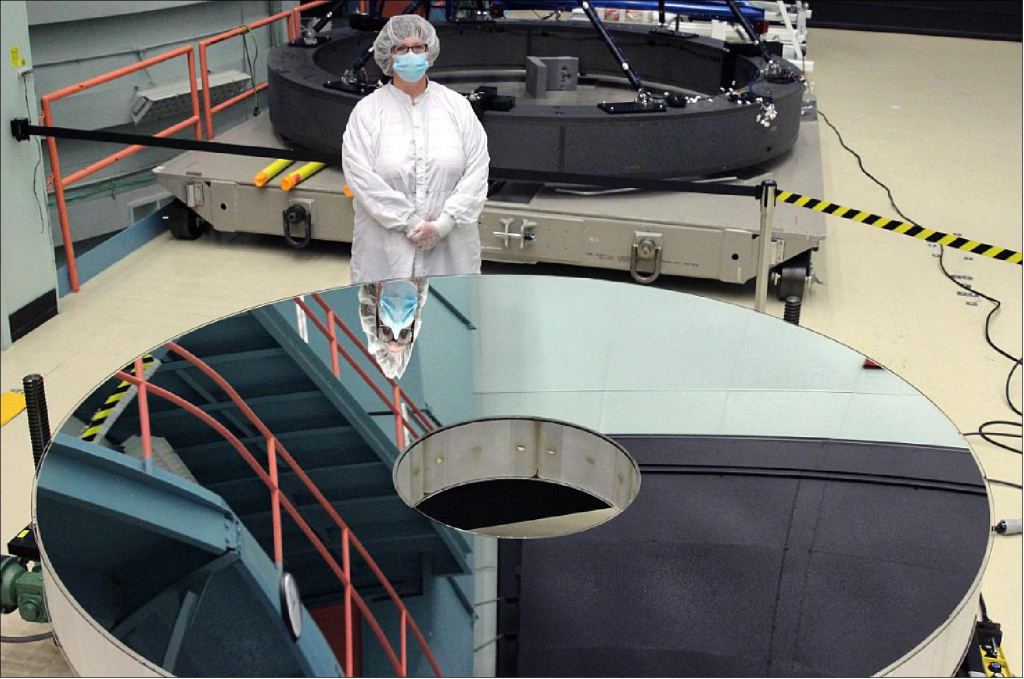
Rates of star formation in different regions hold lots of information for astronomers, and this is another area that the Roman will excel in. “Population experts might ask, what differences are there between people who live in big cities, versus those in suburbia, or rural areas? Similarly, as astronomers we can ask, do the most active star-forming galaxies live in very clustered regions, or just at the edges of clusters, or do they live in isolation?” Malhotra said.
The Roman Space Telescope will also boost exoplanet research. Its powerful coronagraph will allow it to image giant exoplanets and give us some unprecedented high-resolution views of them. It’ll be able to examine proto-planetary disks in the same way and will help us understand if there are other Solar Systems like ours and how common or rare they are.
The Roman will join the JWST as our premier space telescopes. It’s also part of a whole group of telescopes and observatories coming online in the next few years that together promise to advance astronomy in ways we can’t be sure of yet. This group includes the Giant Magellan Telescope, the Thirty Meter Telescope, the European Extremely Large Telescope, and others.
The Roman Space Telescope is set to advance our understanding of the Universe along a lot of detailed, reasearch-driven pathways. That’s important and exciting. But for many people, it’s the Ultra Deep Field images that may be the most compelling. Images like that can become part of our social narrative, and can affect the way even non-scientists think of Earth, humanity, and the Universe. Just look at the effect that the Hubble images have had on an entire generation of people.
In some ways, these deep, wide images of the cosmos may be more important than all the purely scientific advances.
The Nancy Grace Roman Space Telescope is scheduled to launch sometime in 2025 if all goes well. After launch, it’ll be placed into a halo orbit at the Sun-Earth L2 point. It’ll spend five years there, maybe more, observing in both optical and near-infrared.
More:
- Press Release: ROMAN SPACE TELESCOPE COULD IMAGE 100 HUBBLE ULTRA DEEP FIELDS AT ONCE
- Science/Technical Paper: The Wide-Field Infrared Survey Telescope: 100 Hubbles for the 2020s
- Universe Today: WFIRST Passes an Important Milestone, it’s Time to Begin Development and Testing

